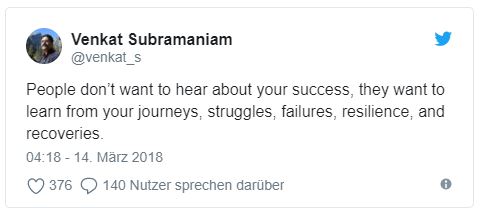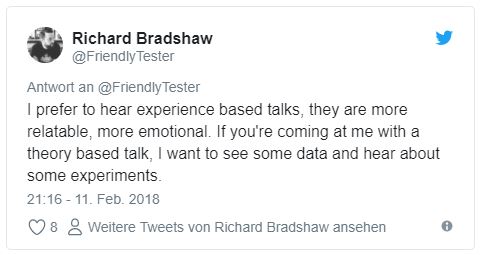
... or How to Write a Successful Proposal
Do you wish to speak at your favorite conference? I have a quick fix for you: become a speaker. That's easier said than done, but nothing to worry about. The first step in your journey to becoming a speaker is to respond to the Call for Papers. Crafting a proposal that gets your talk or workshop selected is quite challenging but it is doable. At this point I want to be honest with you: Proposals are a different type of writing that you are used to. They are difficult to accomplish. They are hard work and tricky. The hardest part is the one before you start typing. The part where you reflect, generate ideas, think about topics that might be of interest for the audience. The trickiest part is how you get your ideas across and keep your audience engaged all the way through.
With a little help, you can also prepare and submit an effective proposal that stands out, grabs attention, and gets you instantly selected for a conference slot.
The X Factor
The Agile Testing Days are not an ordinary agile testing conference. Those who have attended our "festival" before know that the Agile Testing Days are one of a kind. We are full of crazy ideas, of which some are realized at our conference – starting from bringing speakers on stage on the back of a real horse to equipping the venue toilets with special unicorn toilet paper. Every year, we want to surprise our conference attendees and speakers and, therefore, we develop ideas that are often out of the box. And here lies the key to a successful proposal for you.
As we receive hundreds of papers, you must stand out from the mass. You have to think outside the box, get creative, strike a new path, be unique. Uniqueness can also be very simple; sometimes you just need to combine two things. Last year, Robert Lourens and Joost Voskuil have submitted a Robot Warsz Workshop, where attendees could program a robot using a visual programming language and learned more about the whole team approach at the same time. Søren Wassard's Walk'n'Talk session filled a gap; he combined the Open Space format with going for a walk outside. Attendees divided into small groups discussed selected topics as they explored the beautiful Sanssouci Park.
Another way to add the X Factor to your proposal is in form of a video. Short videos of your talk or workshop idea give a first insight into your topic and is a feast for the eyes, too. It attracts and engages potential audiences. You can quickly and easily get your message across. Your potential audience will digest the information they see faster than reading it. We are not saying a video should completely replace written content, but it is a great complement to your proposal and will strengthen your message overall.
The Ahhhh-Moment
It is always important to say something that SHOWS people you’re someone worth listening to. How can you achieve that? Successful proposals usually stand out from the pack and resonate with the reviewers and the audience on an emotional level so that they feel compelled to the message or idea you share.
Everyone Has a Story to Tell
The best proposals are those that tell a reasonable story. Telling a story is a powerful and compelling device because it takes people on a journey; they can imagine themselves in it. Telling a story about what you have experienced, where you have struggled or failed, how you brought value, and most important what you have learned from it, will leave your audience not only inspired and motivated but also smarter. People like to hear stories, where others stumbled over a problem or actually failed, but they love to hear how others have surmounted the problem, how they used the failure and turned it into a success story, and became even better, smarter, or more efficient.
Focus on Helping Your Fellow Professionals
It is always important to say something that SHOWS people you’re someone worth listening to. Although there are people, who prefer experienced-based talks over theory-based ones, it is necessary to keep in mind that the most interesting talks are those that fill an existing knowledge gap or that draw a connection to a topic that the people in the software testing industry are already concerned about. If you are giving a theory-based talk it is not solely about data and facts, you still have to include the audience in your theory talk and offer a helpful suggestion they can use in their daily work.
If you write a proposal for the Agile Testing Days, imagine testers, developers, programmers, practitioners, managers etc. – a diverse mix of attendees from different experience levels, different technical communities and different levels of agile. Always think about your audience and their learnings from your talk or workshop.
The Agile Testing Days offer also a trend track, which is dedicated to all innovative and futuristic topics in the agile and testing business. This special track includes subjects such as Virtual Reality, Robotics, AI, Blockchain, Future Medical Solutions, Cyborgs, Drones, Self-Driving Cars and many more. Here again, experiences matter and experiences are journeys. Don't bore your audience, wow them. By understanding your audience you will ensure that they will be engaged, interested and leave your talk or workshop satisfied.
Keep it Short and Sweet
Many have stressed it before, and I will do it again: Keep your proposal brief and well-structured. (And with brief I don't mean those one-sentence paragraphs that explain nothing and leave the reviewer with many questions.) The traditional way to structure a proposal is to write it in a 3-paragraph style consisting of an introduction, a body, and a conclusion.
- Paragraph (introduction): Introduce the topic. Set it into context, pick your audience up. Why do you choose this topic? What is your motivation? What inspired you to speak about this kind of topic?
- Paragraph (body): Here you can share more details about the problem, your experiences, and your actions. Describe and explain your method and goal. Tell more about the approach you used. What can they expect?
- Paragraph (conclusion): Explain the results. What was the outcome? Also, list why people should come to your talk and what they will learn.
It's similar to telling a story, right? With this structure in mind, it is easier for you to write a short, concise, and appealing abstract. Remember that your proposal will be published on the conference schedule. Therefore, it is very important to get your main message and bullet points across in an easy and consumable way.
Equally important is also who you address in your proposal. Although your proposal gets reviewed by a program committee, keep in my mind to address the target reader, that is the conference attendee. Also, write like you are talking to a real person.
One last thing: proofread. There is nothing more annoying than a sentence that has to be read all over again because it doesn't make sense due to errors of sloppiness, like spelling or grammar mistakes. For some reviewers or readers, a disrupted reading flow may be a reason for exclusion.
Get Feedback Early
If you are not sure whether your topic is of interest to others, ask your colleagues and friends if they would like to hear about it and function as a test audience. They can give you early feedback and provide tips, which can be helpful and valuable for you. Discussing ideas with other people from the community can help you to clarify or change your angle.
It All Starts with an Idea
Don't look too hard for ideas! Maybe you keep track of ideas on your phone or a notepad. You can also actively brainstorm ideas starting from your biggest learnings, everyday experiences, or failures and mistakes. Don't think that you have to submit something totally new. As long as you share your experiences, speak about what you've done, what you've learned or gained, it will be valuable and interesting to others.
This is just a short summary of tips that may help you to write a good proposal. Below you can find some other sources of information. There is not one formula on how to write a good proposal, but if you follow the tips I provided, you will submit the best possible proposal and make it more likely to be accepted. And if your proposal isn’t accepted, then at least you gained experience and knowledge to pursue the next opportunity.

Writing Abstracts: Non-Advice from a Speaker and Reviewer by Cassandra Leung
8 Classic Storytelling Techniques for Engaging Presentations by Ffion Lindsay
What Your Conference Proposal Is Missing by Sarah Mei
Writing/Reviewing Abstracts (Twitter) by Richard Bradshaw
Writing Advice for Conference Proposals by Johanna Rothman
Call for Papers Submission Pitfalls & How to Do it Better! Tales from a Conference Organizer by Uwe Gelfert






